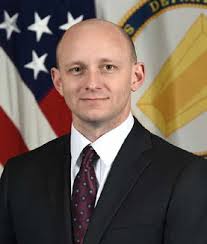
Bryan Shone, PhD, Director of Policy, Resources and Analysis, Office of the Chief Information Officer, Headquarters Department of the Army
Editor’s note: GovLoop interviewed current and former government employees about limiting beliefs they’ve seen throughout their careers in public service. Here’s an excerpt from that conversation in the words of one interviewee.
Bryan Shone, PhD, is the Director of Policy, Resources and Analysis in the Office of the Chief Information Officer, Headquarters Department of the Army. In his role with the Army, Shone uses data and analytics to enable informed decision-making to support digital modernization.
Limiting belief: The primary goal of digital modernization is to reduce costs.
The backstory: When I arrived in the Army, the talking points revolving around cloud computing were focused primarily on how migrating data and applications to the cloud would immediately reduce costs to the Army. As Army senior leaders spoke with industry partners and operators about the potential of moving data and applications to the cloud, the discussion quickly shifted from a simple “lift and shift” of data to reduce costs to the importance of cultivating decision-making at all echelons to improve mission effectiveness and enhance security of our data.
Mixed messages: We conducted a messaging campaign to describe the renewed motives associated with migrating data and applications to the cloud. This shift was reflected in broader federal government discussions pertaining to the transition from Cloud First to Cloud Smart concepts. This has required us to develop a compelling business case that helps the Army enterprise understand that cloud migration is not driven by the desire to reduce costs, but more to improve effectiveness and security.
The reality is: The Army’s digital modernization vision is centered on the concept that data will increasingly be used as the primary ammunition for the future fight. Setting the conditions and establishing the infrastructure to posture the Army for success in this future fight will require investments up front. The Army must reprioritize its existing resources to afford these near-term investments.
Areas for improvement: We need to focus on divesting legacy systems and underperforming programs to free up resources for modernized capabilities. We must analyze software and hardware usage rates and their overall utility, and then prioritize those key enablers in accordance with the Army’s priority missions. We must also examine as-a-service models to determine where the Army can leverage industry expertise to deliver more effective and secure solutions.
What’s at stake: If we truly want to modernize the Army, difficult decisions will need to be made. Not only are significant amounts of resources at stake, but — more importantly — the effectiveness of our Army is at stake. The effectiveness of our future Army will be directly linked to our ability to maintain decision superiority at echelon.
New way of thinking: For the last 18 months, communications across the Army as it pertains to cloud computing and digital modernization have become much more accurate and consistent. Leaders understand that digital modernization — just like any other critical capability set — will require a reprioritization of resources. The Army is identifying ways to harvest savings through IT category management and IT investment accountability to reallocate resources to our top digital modernization priorities.
Rethinking traditional processes: Digital modernization does not always conform to traditional processes used by the government. For example, upgrading our digital collaboration tools during COVID-19 has required the Army to flex on a monthly basis to the latest technological advancements and customer demands. This required us to leverage Agile acquisition approaches. Digital modernization will always be a continuous process.
Developing the right team: Modernization spans all aspects of an organization. Leaders who are truly committed to propelling modernization expand far beyond chief information officers. In the Army, for example, there is a dedicated command for modernization — Army Futures Command. Also, chief data officers have become more important given the increased reliance on data and analytics.
The bottom line: Modernization — particularly digital modernization — is not solely a cost savings endeavor. Just as it takes a reprioritization of resources to modernize an aircraft or a tank, it takes a reprioritization of resources to modernize our digital infrastructure. To say that digital modernization is purely a cost-savings initiative is a myth.
This article is an excerpt from GovLoop’s new guide, “Agency of the Future: Common Misconceptions Holding You Back and How to Break Free.” Download the full guide here.





Leave a Reply
You must be logged in to post a comment.